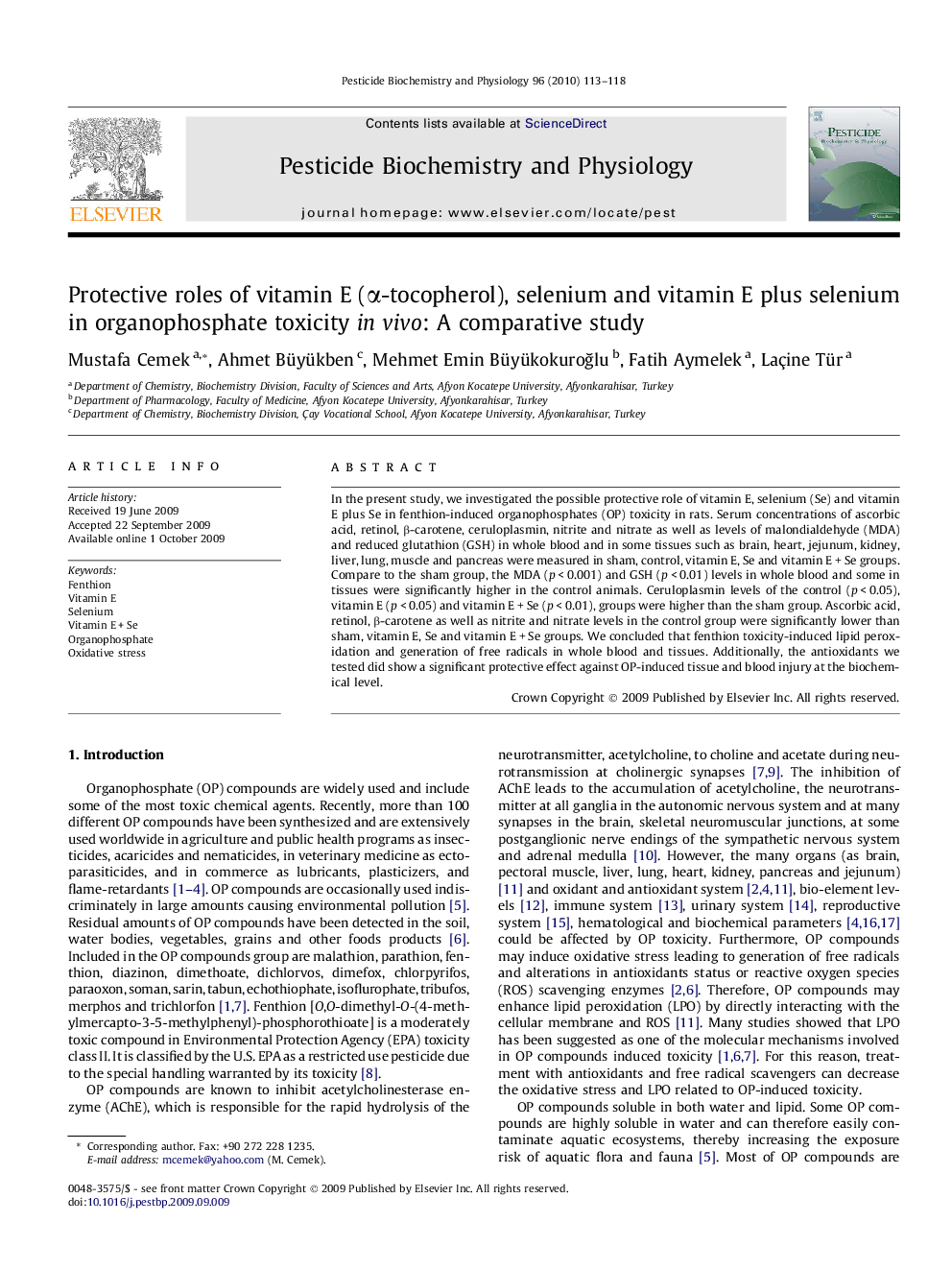| Article ID | Journal | Published Year | Pages | File Type |
|---|---|---|---|---|
| 2009858 | Pesticide Biochemistry and Physiology | 2010 | 6 Pages |
In the present study, we investigated the possible protective role of vitamin E, selenium (Se) and vitamin E plus Se in fenthion-induced organophosphates (OP) toxicity in rats. Serum concentrations of ascorbic acid, retinol, β-carotene, ceruloplasmin, nitrite and nitrate as well as levels of malondialdehyde (MDA) and reduced glutathion (GSH) in whole blood and in some tissues such as brain, heart, jejunum, kidney, liver, lung, muscle and pancreas were measured in sham, control, vitamin E, Se and vitamin E + Se groups. Compare to the sham group, the MDA (p < 0.001) and GSH (p < 0.01) levels in whole blood and some in tissues were significantly higher in the control animals. Ceruloplasmin levels of the control (p < 0.05), vitamin E (p < 0.05) and vitamin E + Se (p < 0.01), groups were higher than the sham group. Ascorbic acid, retinol, β-carotene as well as nitrite and nitrate levels in the control group were significantly lower than sham, vitamin E, Se and vitamin E + Se groups. We concluded that fenthion toxicity-induced lipid peroxidation and generation of free radicals in whole blood and tissues. Additionally, the antioxidants we tested did show a significant protective effect against OP-induced tissue and blood injury at the biochemical level.
